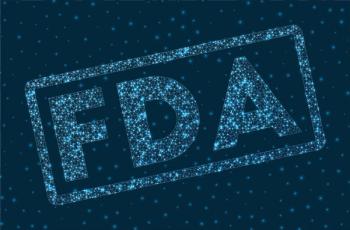
- Psychiatric Times Vol 36, Issue 9
- Volume 36
- Issue 9
Neuroprotective Effects of Antidepressants in First-Episode Schizophrenia
Negative symptoms, subsyndromal depressive symptoms, and functional impairment often persist in patients with first-episode schizophrenia.
RESEARCH UPDATE
Negative symptoms, subsyndromal depressive symptoms, and functional impairment often persist in patients with first-episode schizophrenia (FES). Although there is evidence that antidepressants may
Participants were enrolled at one of four sites between 2010 and 2014. Inclusion criteria were a DSM IV-TR diagnosis of first-episode schizophrenia or schizophreniform disorder; aged 15 to 40 years with onset of psychosis before age 35; cumulative antipsychotic treatment for 4 to 24 weeks; no antidepressant treatment within 4 weeks; a score less than 7 on CDSS, and a score of less than 3 on the Clinical Global Impression Scale for Suicidality (CGI-SS). Exclusion criteria were substance use (except cannabis) within past 3 months, unstable medical illness, and a QTc higher than 500 ms on electrocardiogram.
The patients were randomized (1:1 ratio stratified by site) to add-on citalopram or placebo. Citalopram was started at 20 mg once daily and increased to 40 mg after one week. Doses in the range of 10 mg to 40 mg daily were allowed during the trial. All participants also received 16 weekly sessions, followed by 8 monthly session of psychoeducation and relapse prevention. If participants scored a 3 on the CGI-SS or 7 or higher on the CDSS at any point during the trial, they received 12 sessions of cognitive behavior therapy for depression.
Participants who continued to meet these criteria after 4 weeks or those who scored 4 or higher on the CGI-SS or 10 or higher on the CDSS were removed from double-blind treatment and could have an unblinded prescription for an antidepressant. Data were analyzed using an intent-to-treat linear mixed model of CDSS and SANS with Area Under the Curve (AUC) as the primary outcome measures.
A total of 129 participants were screened and 95 were randomized (49 to citalopram and 46 to placebo); 73 completed 6-month assessments and 52 completed 12-month assessments, with no difference in completion rates between the groups. The mean daily dosage of citalopram was 36 mg daily and adherence rates were approximately 90% in both groups. Mean antipsychotic dose in chlorpromazine units was 374 mg daily. There were no differences in baseline demographic and clinical variables between the groups, although completers had lower psychopathology and higher cognition scores compared with non-completers.
There was a significant reduction in depression scores in the placebo group compared with the citalopram group. By contrast, there was a significant reduction in negative symptom scores in the citalopram group compared with the placebo group, particularly for the avolition subscale. A shorter DUP predicted greater placebo response for improvement in negative symptoms. Rates of new-onset depression did not differ between the groups. Sexual adverse effects were more common with citalopram, but there was no difference in overall treatment-emergent adverse effects.
The bottom line
The researchers concluded that adjunctive citalopram may reduce negative symptoms, particularly in patients with a longer DUP, but was not beneficial for subsyndromal depressive symptoms in patients with FES. This pattern of findings suggests a primary effect for the benefit of citalopram on negative symptoms, rather than a secondary effect of antidepressant response.
This article was originally published on 3/19/2019 and has since been updated.
References:
1. Helfer B, Samara MT, Huhn M et al.
2. Robinson DG, Schooler NR, John M, et al.
3. Goff DC, Freudenreich O, Cather C, et al.
Articles in this issue
about 6 years ago
How We Eatabout 6 years ago
How Anxiety and Habits Contribute to Anorexia Nervosaabout 6 years ago
Interoception in Eating Disorders: A Clinical Primerabout 6 years ago
Closing the Research-Practice Gap in Eating Disordersabout 6 years ago
Mixed Features, Suicide, and Adolescents at Riskabout 6 years ago
How Catastrophe Can Change Personalityabout 6 years ago
Fasten Your Seatbeltsover 6 years ago
Mergers and More Rock the Pharmaceutical Industryover 6 years ago
A Drug’s Journey: From the Pill Bottle to the ToiletNewsletter
Receive trusted psychiatric news, expert analysis, and clinical insights — subscribe today to support your practice and your patients.















